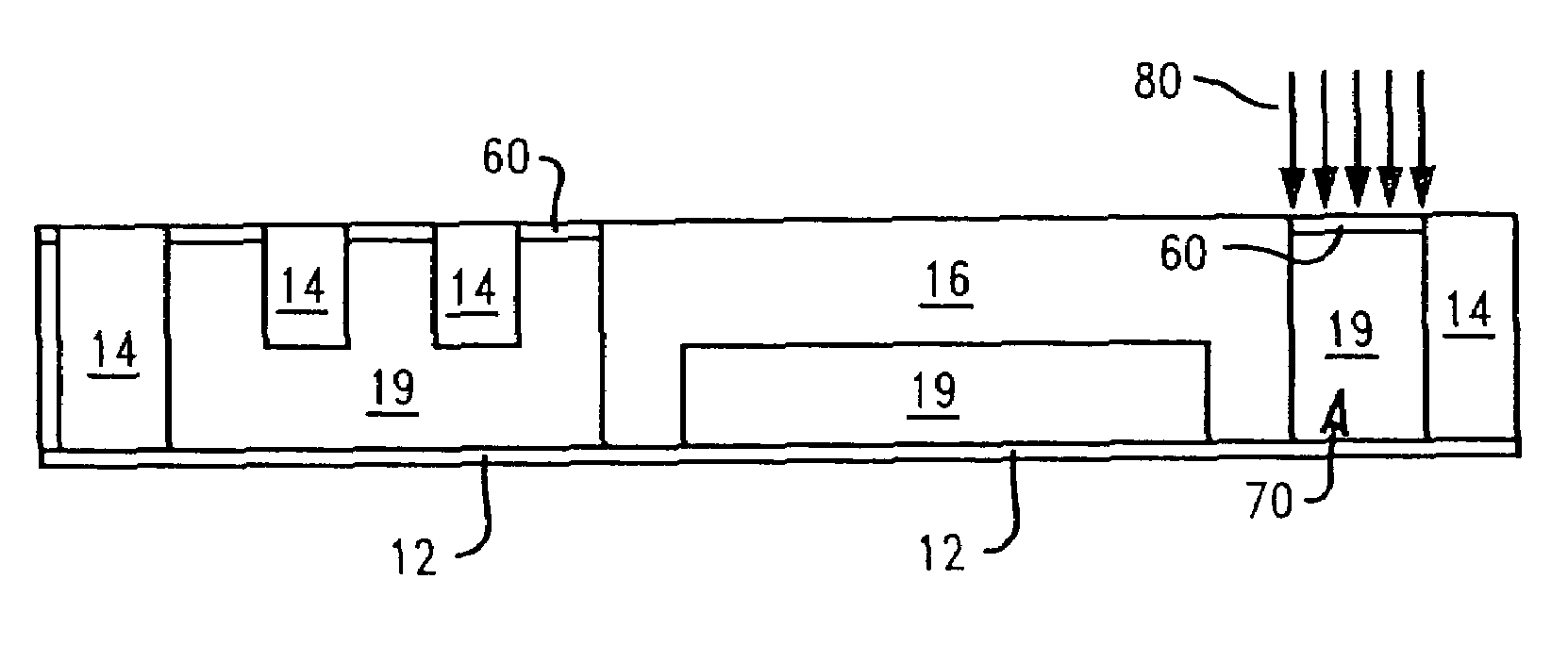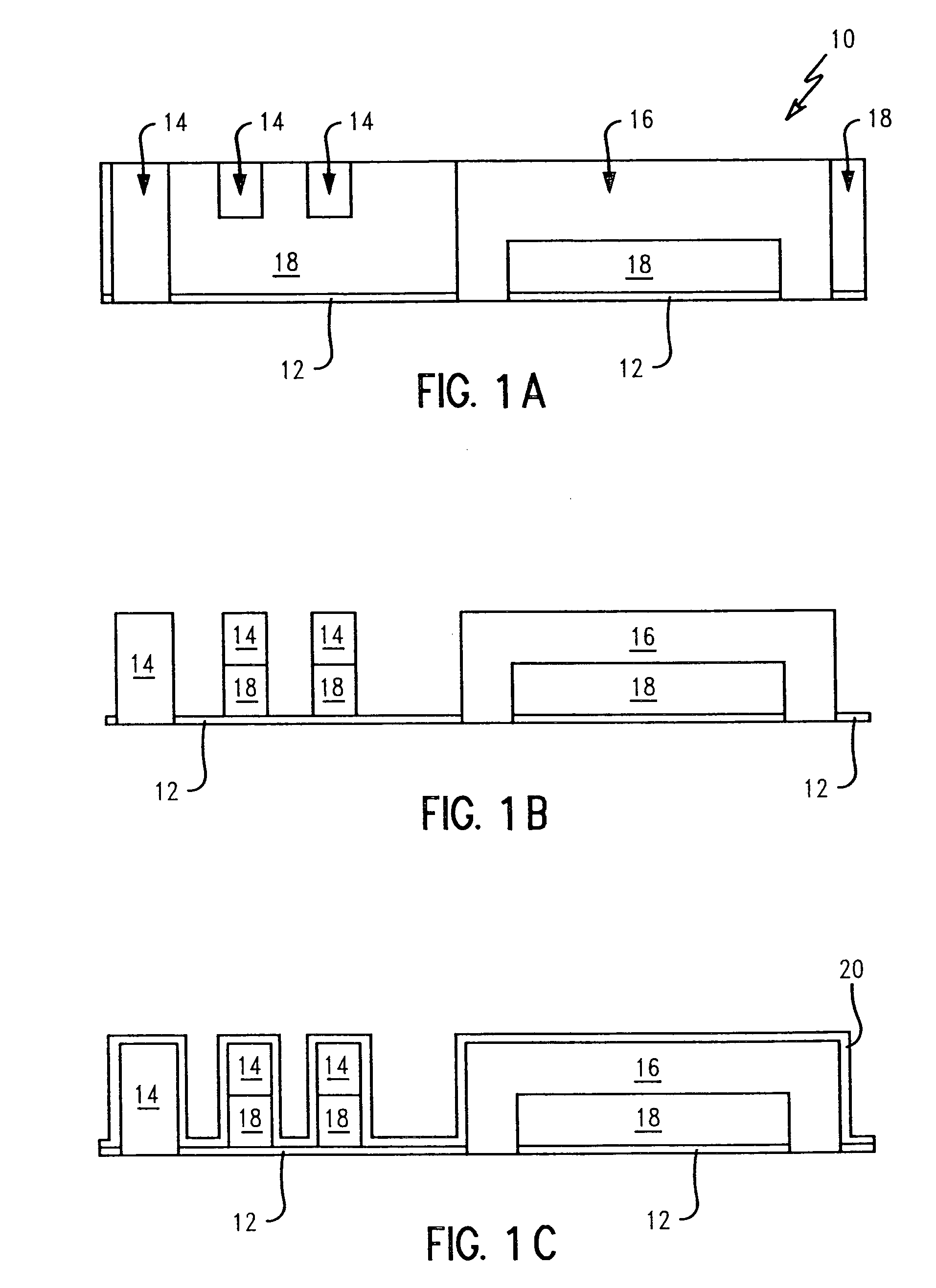Crackstop with release layer for crack control in semiconductors
a technology of crack stop and release layer, which is applied in the direction of liquid surface applicators, semiconductor/solid-state device details, coatings, etc., can solve the problems of cracks that damage the active area of chips, insulator material mechanically weakening, and it is significantly easier for crack stop/edge seal to be breached
- Summary
- Abstract
- Description
- Claims
- Application Information
AI Technical Summary
Benefits of technology
Problems solved by technology
Method used
Image
Examples
Embodiment Construction
[0027]In describing the preferred embodiment of the present invention, reference will be made herein to FIGS. 1A–5C of the drawings in which like numerals refer to like features of the invention.
[0028]Crack stops are often incorporated around the perimeter of chips for preventing damage or cracks from reaching the active areas of the chips during dicing. The present invention provides a vertical interface adjacent to an existing crack stop around a perimeter of a chip, such as a metal crack stop having a pyramid design. The vertical interface of the invention controls cracks emanating from diced edges from traversing through, i.e., cracking, the crack stop, as well as controls cracks as a result of packaged-induced stresses in service.
[0029]The vertical interface is comprised of a material that prevents generated cracks from damaging the crack stop by deflecting any generated cracks from entering into the crack stop or by absorbing the generated cracks. The vertical interface also m...
PUM
 Login to View More
Login to View More Abstract
Description
Claims
Application Information
 Login to View More
Login to View More - R&D
- Intellectual Property
- Life Sciences
- Materials
- Tech Scout
- Unparalleled Data Quality
- Higher Quality Content
- 60% Fewer Hallucinations
Browse by: Latest US Patents, China's latest patents, Technical Efficacy Thesaurus, Application Domain, Technology Topic, Popular Technical Reports.
© 2025 PatSnap. All rights reserved.Legal|Privacy policy|Modern Slavery Act Transparency Statement|Sitemap|About US| Contact US: help@patsnap.com



